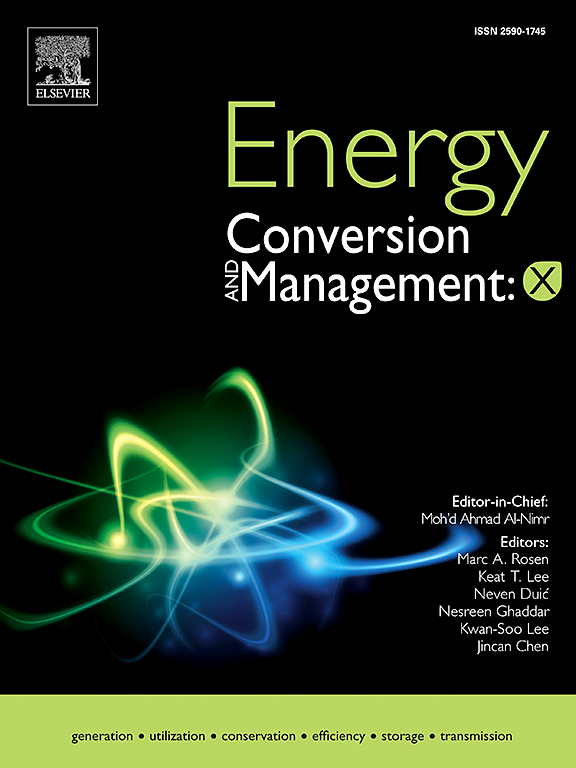A comprehensive review on biological methanation processes: from gaseous feedstocks to biomethane
IF 10.9
1区 工程技术
Q1 ENERGY & FUELS
引用次数: 0
Abstract
Biological methanation is a process that utilizes methanogenic archaea as catalysts to convert carbon dioxide (CO2) and hydrogen (H2) to methane (CH4). The process can be carried out in various ways: in-situ, i.e. within a biogas digestor fed with organic feedstocks and H2, ex-situ, i.e. in a reactor fed with CO2-rich gas and H2, or in a microbial electrosynthesis reactor, where the reducing equivalents for CO2 reduction are provided with cathode electrode. This review shortly presents the key metabolic pathways involved in biological methanation and the different process options, including microbial electrosynthesis, and examines in detail the significance of the CO2 and H2 sources and the availability and composition of these gas streams, and presents results from life cycle assessment (LCA) of biological methanation processes. The focus of the review is on biogenic CO2. When planning biological methanation, it is crucial to carefully evaluate the options of transferring CO2 and/or H2 or producing H2 where CO2 is produced in terms of cost and feasibility. The continuous versus intermittent availability of CO2 and H2 as well as the potential presence of impurities in the CO2-rich gases can impact the efficiency of the biological methanation process. Specifically, impurities such as nitrogen and sulfur oxides, hydrogen sulfide and heavy metals can negatively impact the biological methanation process. Several LCA studies have demonstrated that biological methanation significantly reduces the greenhouse gas emissions and improves climate impacts, when renewable energy is used for H2 generation and natural gas replacement is considered.

生物甲烷化过程综述:从气态原料到生物甲烷
生物甲烷化是利用产甲烷古菌作为催化剂将二氧化碳(CO2)和氢气(H2)转化为甲烷(CH4)的过程。该过程可以通过多种方式进行:就地进行,即在以有机原料和H2为原料的沼气池中进行;非就地进行,即在以富含二氧化碳的气体和H2为原料的反应器中进行;或者在微生物电合成反应器中进行,其中提供了用于CO2还原的还原等量物,阴极电极。本文简要介绍了生物甲烷化的关键代谢途径和不同的工艺选择,包括微生物电合成,并详细介绍了CO2和H2来源的重要性以及这些气体流的可用性和组成,并介绍了生物甲烷化过程的生命周期评估(LCA)的结果。这篇综述的重点是生物源性二氧化碳。在规划生物甲烷化时,从成本和可行性方面仔细评估转移CO2和/或H2或在产生CO2的地方生产H2的选择是至关重要的。CO2和H2的连续或间歇可用性,以及富含CO2的气体中潜在的杂质存在,都会影响生物甲烷化过程的效率。具体来说,氮和硫氧化物、硫化氢和重金属等杂质会对生物甲烷化过程产生负面影响。一些LCA研究表明,当可再生能源用于制氢并考虑替代天然气时,生物甲烷化可以显著减少温室气体排放,改善气候影响。
本文章由计算机程序翻译,如有差异,请以英文原文为准。
求助全文
约1分钟内获得全文
求助全文
来源期刊

Energy Conversion and Management
工程技术-力学
CiteScore
19.00
自引率
11.50%
发文量
1304
审稿时长
17 days
期刊介绍:
The journal Energy Conversion and Management provides a forum for publishing original contributions and comprehensive technical review articles of interdisciplinary and original research on all important energy topics.
The topics considered include energy generation, utilization, conversion, storage, transmission, conservation, management and sustainability. These topics typically involve various types of energy such as mechanical, thermal, nuclear, chemical, electromagnetic, magnetic and electric. These energy types cover all known energy resources, including renewable resources (e.g., solar, bio, hydro, wind, geothermal and ocean energy), fossil fuels and nuclear resources.
 求助内容:
求助内容: 应助结果提醒方式:
应助结果提醒方式:


